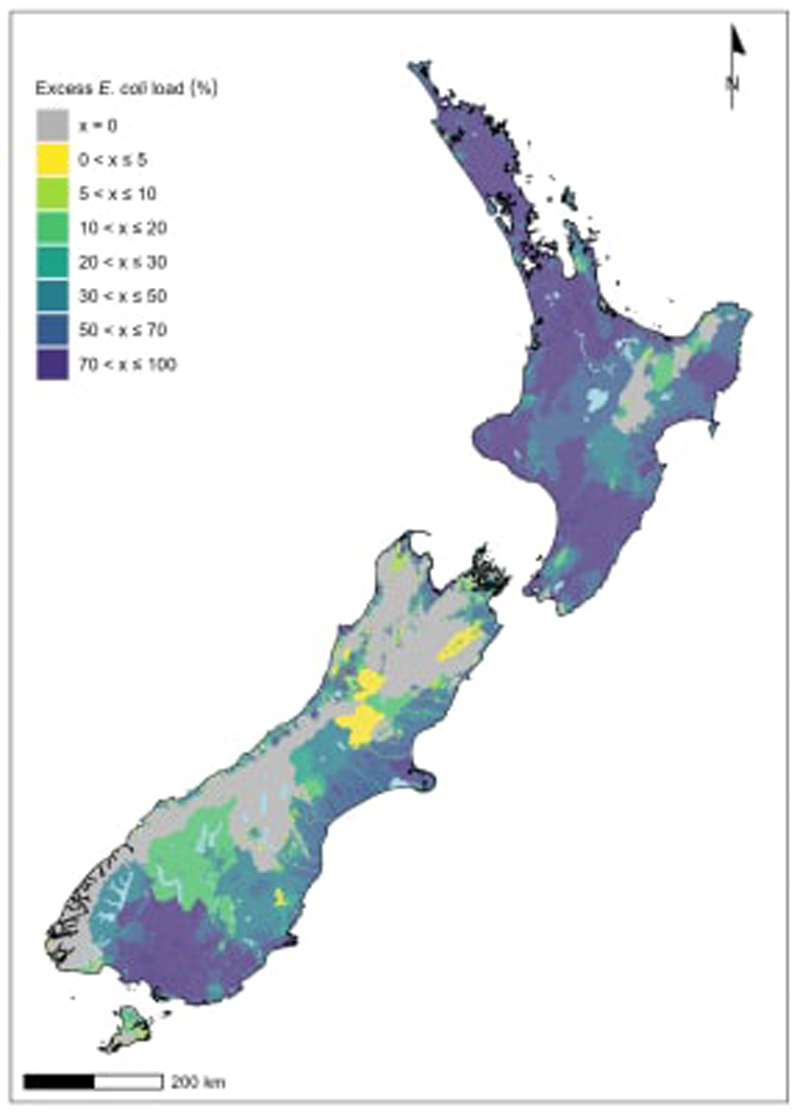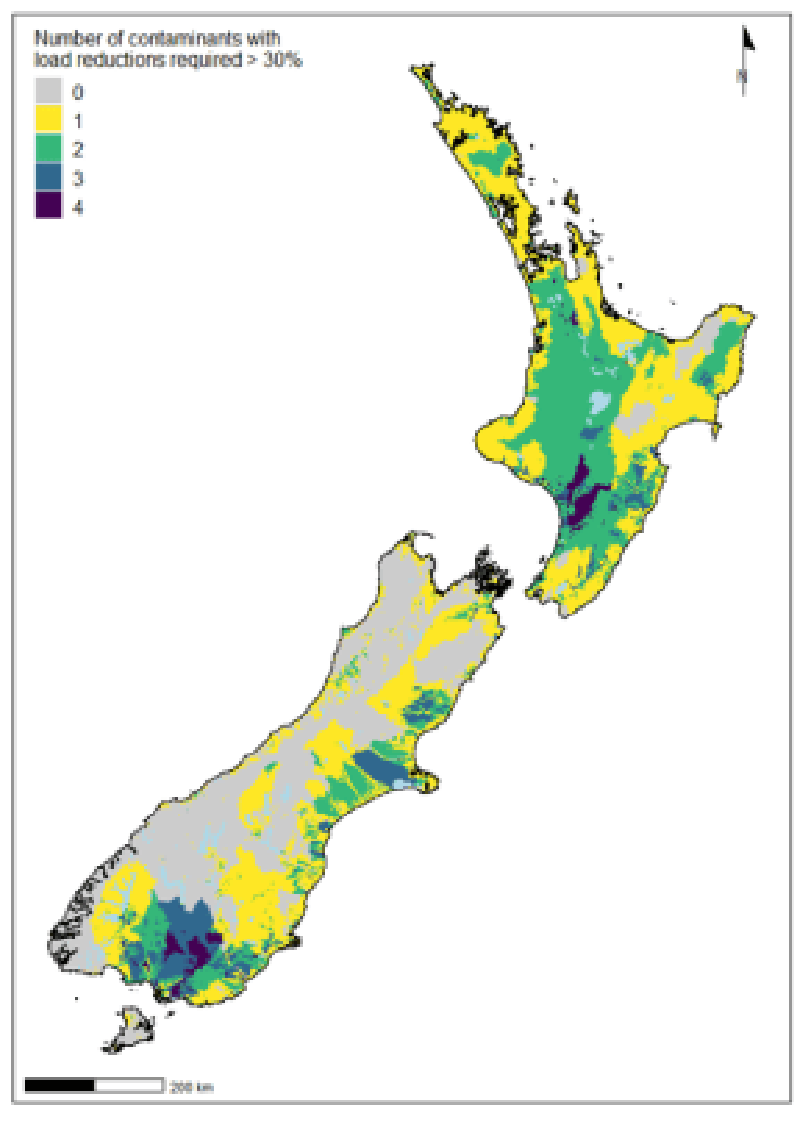Freshwater contamination exceeding targets - study
Reporting by RNZ
30 November 2023, 10:35 PM

Deep challenges lie ahead for New Zealand to achieve its water quality goals with current land use and the state of contaminants in freshwater, new research shows.
A new study from Our Land and Water has looked at 2020 levels of nitrogen, phosphorus, E coli and sediment in the country's rivers, lakes and estuaries - and found almost every region in New Zealand has at least one contaminant in excess of current freshwater targets.
The study paints a picture of the size of the job ahead to reduce levels to safe or "bottom line" levels under the government's National Policy Statement for Freshwater Management 2020.
The reduction needed for the four contaminants varied from 24 to 66 percent region by region.

E coli critical catchment excess yields percent.E coli critical catchment excess yields percent. Photo: Our Land and Water
E coli was the stand-out, with the study finding that three-quarters of all land in Aotearoa is contributing more E coli to freshwater than is currently allowed under freshwater rules.
Lead author Ton Snelder said the largest reductions to be made were of E coli.
"It is different for each contaminant," Snelder said.
"E coli is a ubiquitous contaminant and obviously, it's associated with warm-blooded animals.
"There are levels of E coli in all parts of the environment, including parts in a natural state."
He said the impact of intensive agriculture was captured more clearly by nitrogen and phosphorus levels.
"So areas with intensive land use do have higher nitrogen load reductions compared to other regions where agricultural intensity is less."
The report found Canterbury needed to reduce nitrogen by 44 percent, and Southland by 41 percent.
"There are catchments with very large load reductions, greater than 30 percent, for example. And reductions of this magnitude are probably not achievable without changing current land use."
The new coalition government will have some tough policy decisions ahead.

Contaminants with load reductions required over 30 percent.Contaminants with load reductions required over 30 percent. Photo: Supplied / Our Land and Water
The coalition agreement between National and ACT shows they will replace the current National Policy Statement for Freshwater Management 2020 to "allow district councils more flexibility in how they meet environmental limits" and also to "seek advice on how to exempt councils from obligations under the National Policy Statement for Freshwater Management 2020 as soon as practicable."
Our Land and Water National Science Challenge director Jenny Webster-Brown hoped the new government would not replace the legislation or change the standards.
"[This study] is not a call for a revision or a rethink of the national bottom lines - it is simply an account of what we need to do to achieve them," Webster-Brown said.
"I would like to think that our current coalition government would not be tempted to simply throw the baby out with the bathwater and start all over again. I think that would be hugely damaging for the progress we have made on improving our freshwater systems."
The analysis used digital representation of New Zealand's 650,000 river segments, 961 lakes and 419 estuaries and their catchment area. The research used models informed by data collected at 850 long-term water quality monitoring sites.
Monique Steele, Rural Journalist
Reproduced with permission



